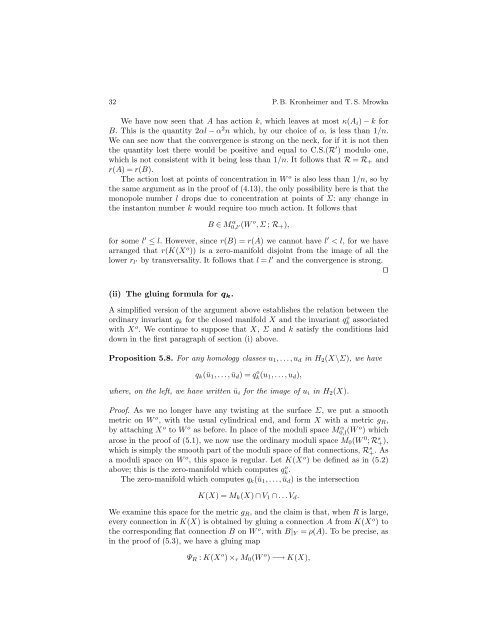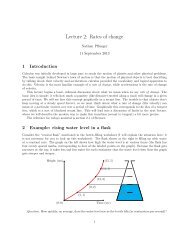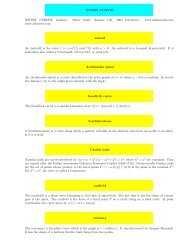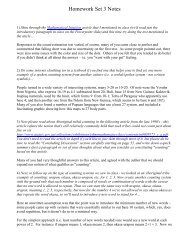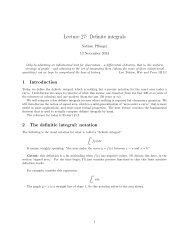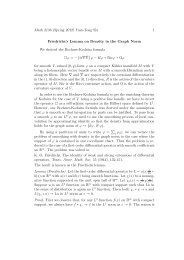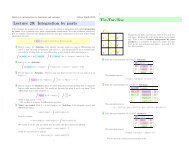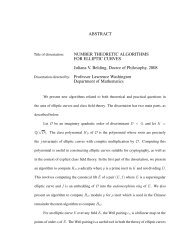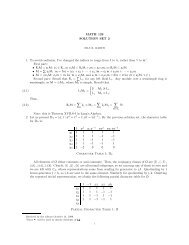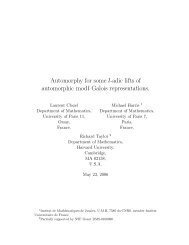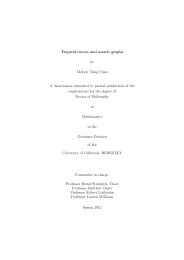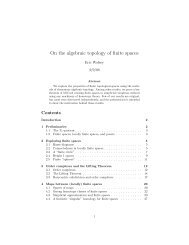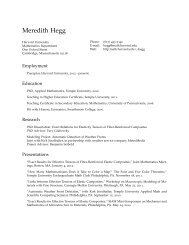Gauge theory for embedded surfaces, II
Gauge theory for embedded surfaces, II
Gauge theory for embedded surfaces, II
Create successful ePaper yourself
Turn your PDF publications into a flip-book with our unique Google optimized e-Paper software.
32 P. B. Kronheimer and T. S. Mrowka<br />
We have now seen that A has action k, which leaves at most κ(Ai) − k <strong>for</strong><br />
B. This is the quantity 2αl − α 2 n which, by our choice of α, islessthan1/n.<br />
We can see now that the convergence is strong on the neck, <strong>for</strong> if it is not then<br />
the quantity lost there would be positive and equal to C.S.(R ′ ) modulo one,<br />
which is not consistent with it being less than 1/n. It follows that R = R+ and<br />
r(A)=r(B).<br />
The action lost at points of concentration in W o is also less than 1/n, soby<br />
the same argument as in the proof of (4.13), the only possibility here is that the<br />
monopole number l drops due to concentration at points of Σ: any change in<br />
the instanton number k would require too much action. It follows that<br />
B ∈ M α 0,l ′(W o ,Σ; R+),<br />
<strong>for</strong> some l ′ ≤ l. However, since r(B) =r(A) we cannot have l ′


